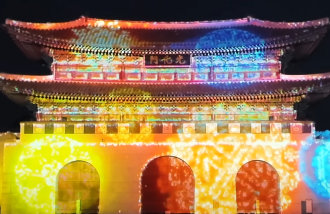[Opinion] Pilgrimage to Three Temples
[Opinion] Pilgrimage to Three Temples
Posted February. 17, 2005 22:51,
There is a custom in the Buddhist community called pilgrimage to three temples. This ritual of making pilgrimages to famous temples began with the idea that visiting three different temples for worship brings in luck while warding off evil. According to Donggukseshigi, a historical literature piece of Korea, This ritual was conducted at the Bongeunsa Temple in Gwangju during leap months. It is interesting that the Bongeunsa Temple neighborhood in Gangnam, Seoul was incorporated into the administrative district of Gwangju, Gyeonggi Province at that time. In the past, the custom used to be practiced mainly during lunar leap months, but it is also celebrated around the First Full Moon Day or July 15 (lunar calendar) nowadays.
The most popular places among followers are the three treasure (sam-bo) temples, including Haeinsa Temple in Hapcheon-gun, Tongdosa Temple in Mt. Yangsan, and Songgwangsa Temple in Suncheon. Tongdosa, which enshrines Buddhas bones, is called bul-bo. Haeinsa, which keeps the Tripitaka Koreana (Palman Daejanggyeong), is named beob-bo, and Songgwangsa, which produced many great monks, is termed seoung-bo. Each of the three temples has its own unique tradition. Haeinsa, Tongdosa, and Songgwangsa have produced a large number of Zen (seon) monks, prominent (geol) monks, and learning (hak) monks, respectively. They say monks also become willing to study and practice the Zen cult painstakingly at Haeinsa, interested in art and culture at Tongdosa, and studious at Songgwangsa.
Instead of the above-mentioned temples, some people visit the top three prayer sitesBoriam off the south coast, Bomunsa in Ganghwa County, and Hongryeonam in Naksansa Temple. These places command good sea views, and the prayers there are known to be well granted. Others look for unknown temples hidden deep in the forest, where Zen masters strong religious spirit and the depth of their discipline can be felt. Occasionally, the insight of choosing the temple for pilgrimage and the attitude in the pilgrimage resorts serve as barometers that reflect the depth of belief and the level of the temple that the pilgrim belongs.
You do not have to be a Buddhist to go on a pilgrimage. Anyone can decide on a theme of his/her own and set out for a weekend pilgrimage, which will be meaningful on its own right. For recommendation: visits to primary and secondary alma maters, looking around birth homes, newlyweds houses, and first-owned houses, memory trips to three places where you used to go often with your wife, and three visits for community service to help the less fortunate. Unexpected joy may be waiting for you.
Oh Myung Chul, Editorial writer, oscar@donga.com







